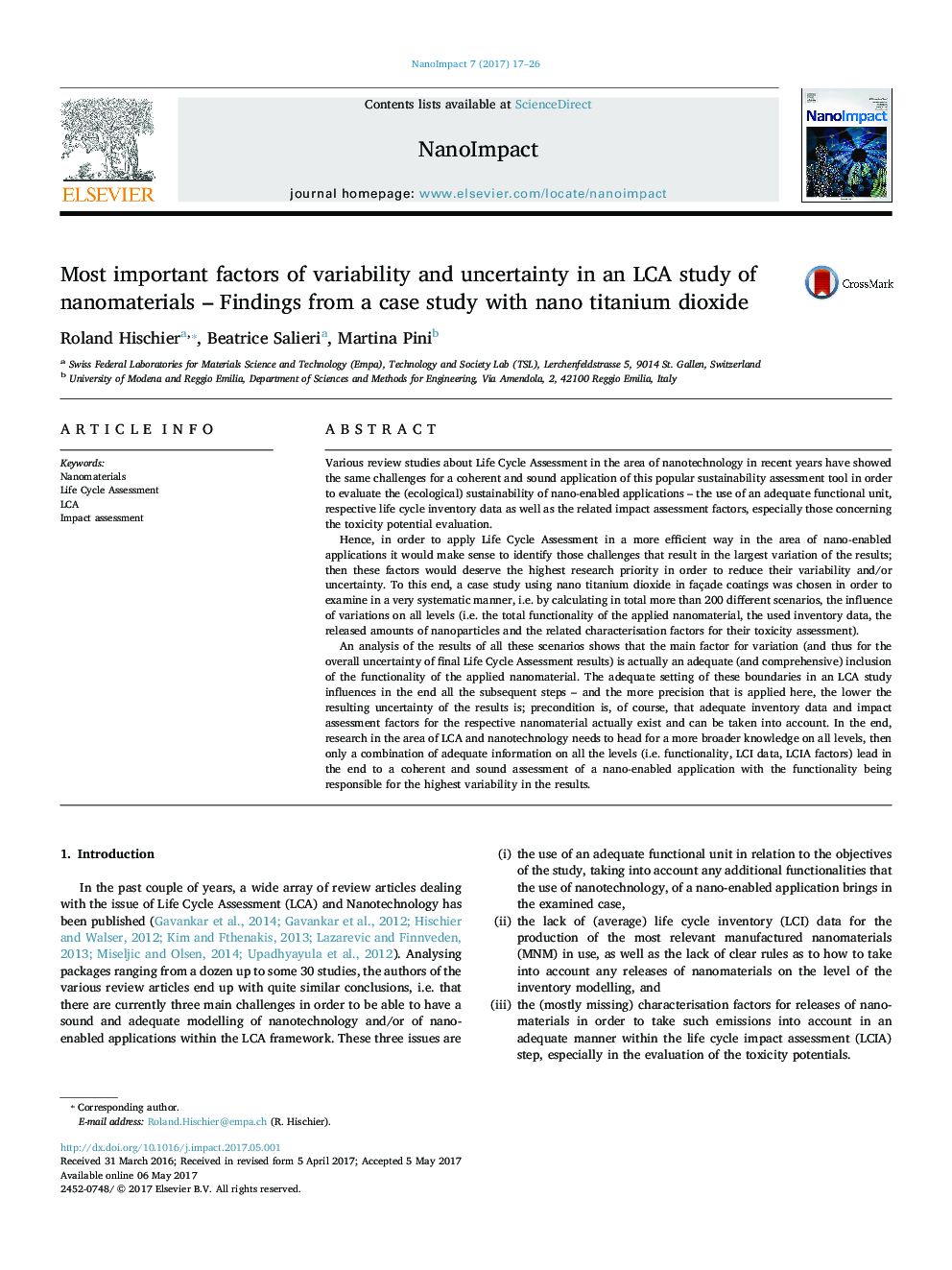| کد مقاله | کد نشریه | سال انتشار | مقاله انگلیسی | نسخه تمام متن |
|---|---|---|---|---|
| 5560697 | 1562020 | 2017 | 10 صفحه PDF | دانلود رایگان |

- More than 200 scenarios analysed in order to evaluate influences and relevance of the three known key challenges, when applying LCA to nano-enabled applications;
- Key to get an appropriate result is a comprehensive and adequate inclusion of all functionalities of the (new) nanomaterial in the examined application case;
- An additional precondition to be able to calculate appropriate results are respective inventory data for the production of the nanomaterial and characterisation factors for eventual releases of this material
Various review studies about Life Cycle Assessment in the area of nanotechnology in recent years have showed the same challenges for a coherent and sound application of this popular sustainability assessment tool in order to evaluate the (ecological) sustainability of nano-enabled applications - the use of an adequate functional unit, respective life cycle inventory data as well as the related impact assessment factors, especially those concerning the toxicity potential evaluation.Hence, in order to apply Life Cycle Assessment in a more efficient way in the area of nano-enabled applications it would make sense to identify those challenges that result in the largest variation of the results; then these factors would deserve the highest research priority in order to reduce their variability and/or uncertainty. To this end, a case study using nano titanium dioxide in façade coatings was chosen in order to examine in a very systematic manner, i.e. by calculating in total more than 200 different scenarios, the influence of variations on all levels (i.e. the total functionality of the applied nanomaterial, the used inventory data, the released amounts of nanoparticles and the related characterisation factors for their toxicity assessment).An analysis of the results of all these scenarios shows that the main factor for variation (and thus for the overall uncertainty of final Life Cycle Assessment results) is actually an adequate (and comprehensive) inclusion of the functionality of the applied nanomaterial. The adequate setting of these boundaries in an LCA study influences in the end all the subsequent steps - and the more precision that is applied here, the lower the resulting uncertainty of the results is; precondition is, of course, that adequate inventory data and impact assessment factors for the respective nanomaterial actually exist and can be taken into account. In the end, research in the area of LCA and nanotechnology needs to head for a more broader knowledge on all levels, then only a combination of adequate information on all the levels (i.e. functionality, LCI data, LCIA factors) lead in the end to a coherent and sound assessment of a nano-enabled application with the functionality being responsible for the highest variability in the results.
78
Journal: NanoImpact - Volume 7, July 2017, Pages 17-26